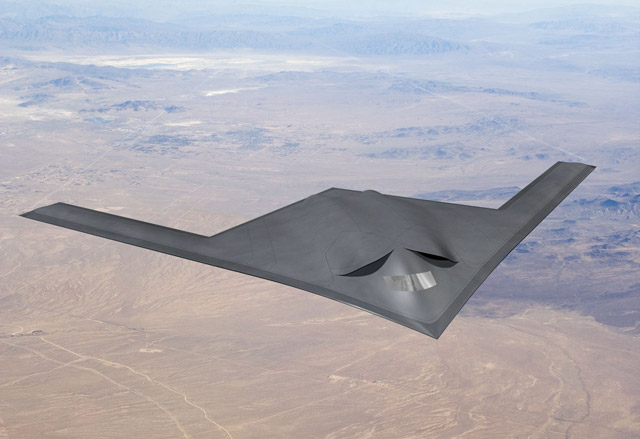The two-star general in charge of the US Air Force’s nuclear mission says the Long-Range Strike Bomber (LRS-B) programme is “going exceedingly well” and meeting its major milestones despite a four-month delay to downselecting a prime contractor.
Maj Gen Garrett Harencak says he agrees with the $460 million funding reduction recently proposed by the house armed services committee for fiscal 2016, since the air force won’t be able to spend big on the programme until the contract is awarded anyway. Northrop Grumman and a Boeing-Lockheed Martin team are vying for the contract.
“We can keep this system on track and take those reductions,” he said at a 13 May Air Force Association event in Washington, noting that there would likely be years when money needs to be shifted from another account to support the bomber.
According to language in the committee’s defense policy bill, the four-month contract delay left the air force with $360 million in surplus funding appropriated for fiscal 2015 that can cover some of next year’s expenditures. The additional $100 million can be cut due to a “slower spend rate” in fiscal 2016. In total, the committee would fund the LRS-B at $786.2 million. The programme requires $14 billion in funding over the next five years.

The air force wants to buy 80 to 100 stealthy, nuclear-capable bombers at a cost of about $550 million per copy to supplement and then eventually replace the aging B-1 Lancer and B-52 fleets. Air force acquisition spokesman Ed Gulick says the service expects to award a contract this summer.
According to Clark Murdock of the Center for Strategic and International Studies, spending on nuclear modernisation will spike from 4-5% of the entire defence budget to about 8-9% in the 2020s when accounting for LRS-B, although that’s still proportionally less than other nuclear powers like Russia and China spend on their strategic nuclear weapons. The new bomber will also support conventional operations.
Murdock thinks investment in a new bomber is important to America’s national security strategy, although he would prefer a large bomber with long-range, standoff weapons like the air force's new nuclear-tipped cruise missle over a stealthy, penetrating bomber if there were not enough resources for both.
“Our defence budget is cost-capped, and it leads everybody to question every expenditure because you’re trying to force as much programme into your budget as possible,” he says, referring to automatic spending limits known as sequestration. “Everybody’s trying to sneak their nose into the tent and foot in the door.
“You should identify your must-have capabilities and adequately fund them, because you don’t want to have inadequately funded must-have capabilities. It’s an oxymoron.”
The air force asked Congress for $1.25 billion to support the bomber program in its fiscal 2016 budget request published in March. That funding profile climbs to $3.8 billion annually by 2020.
Source: FlightGlobal.com



















